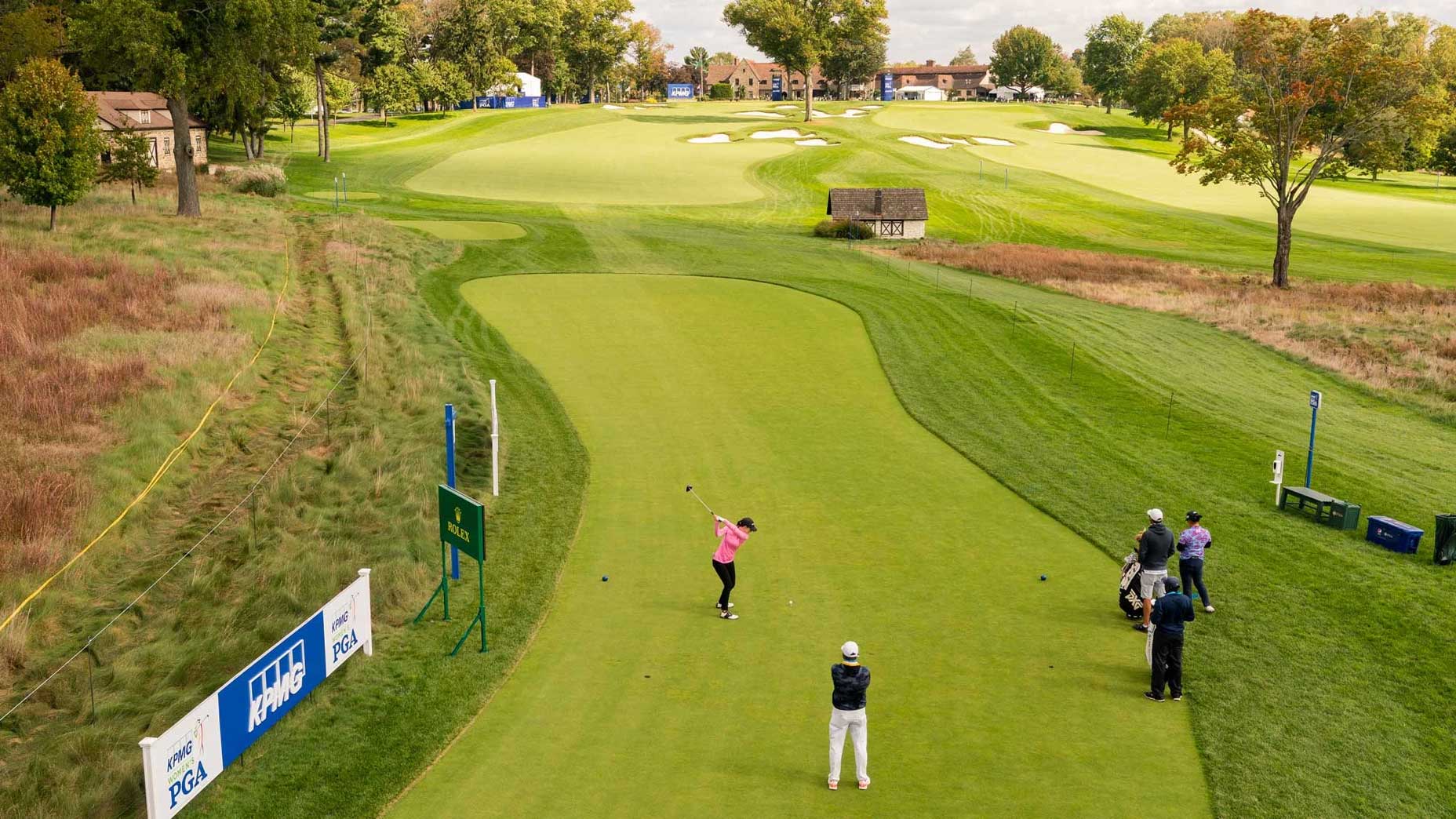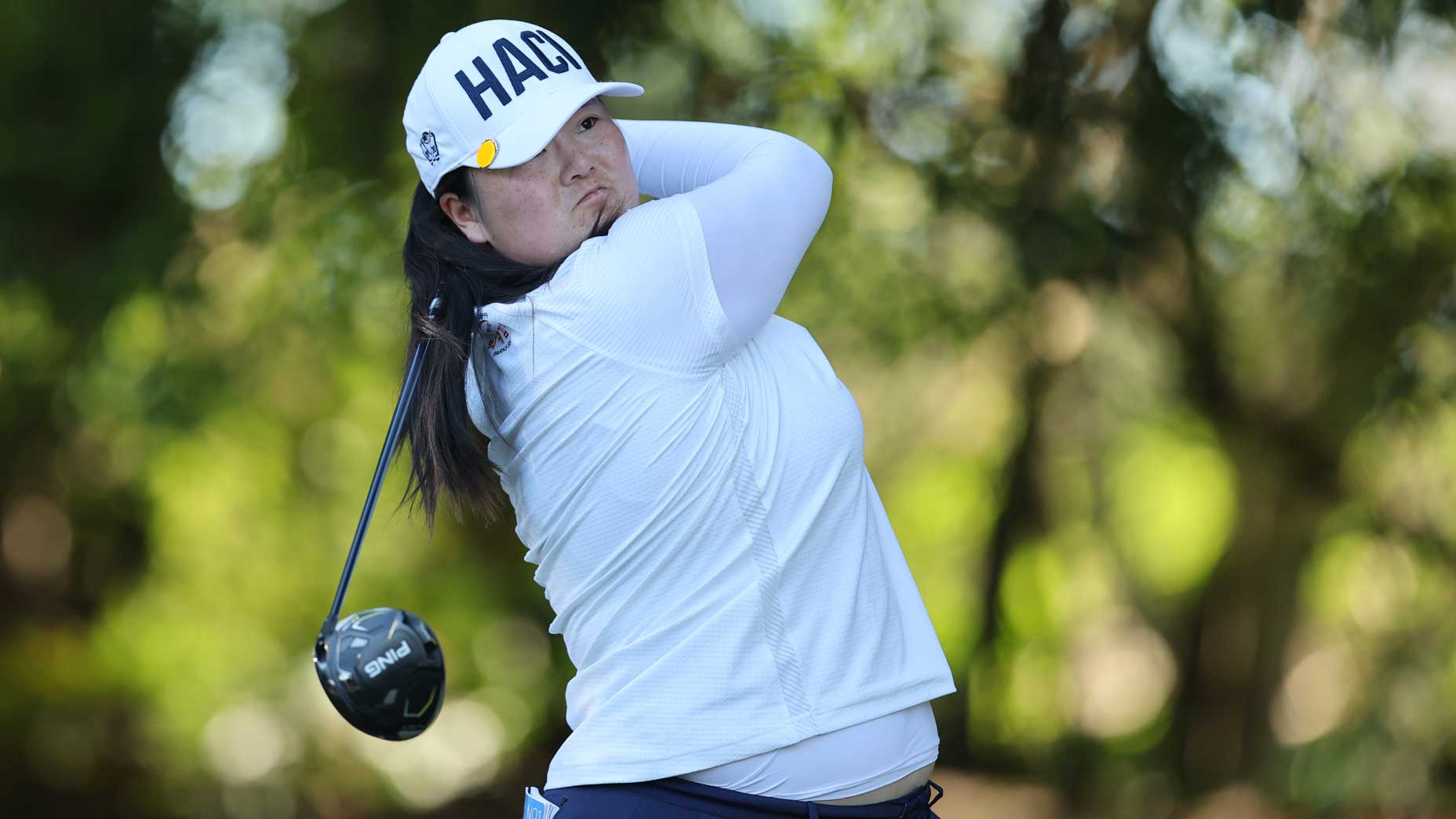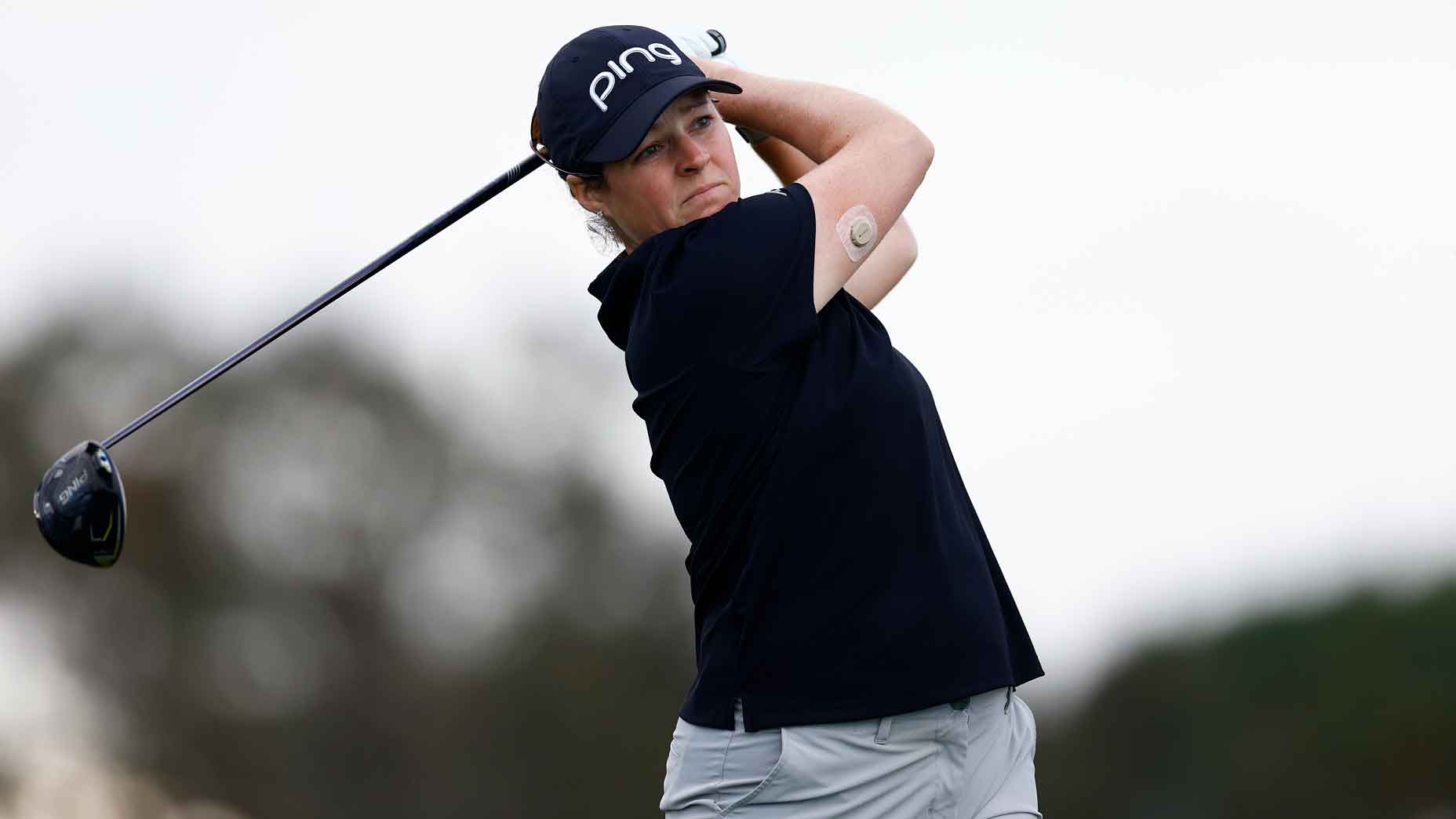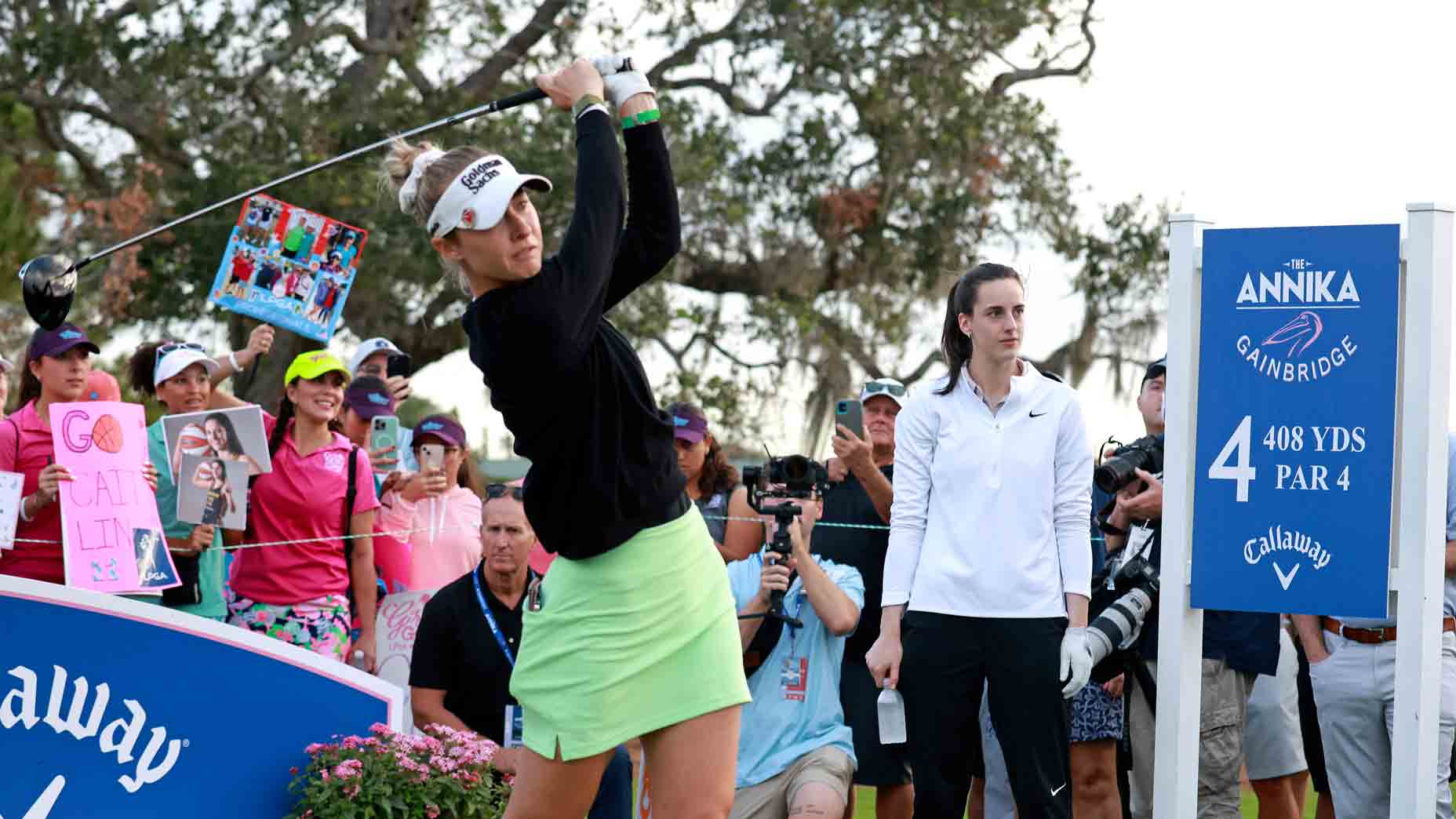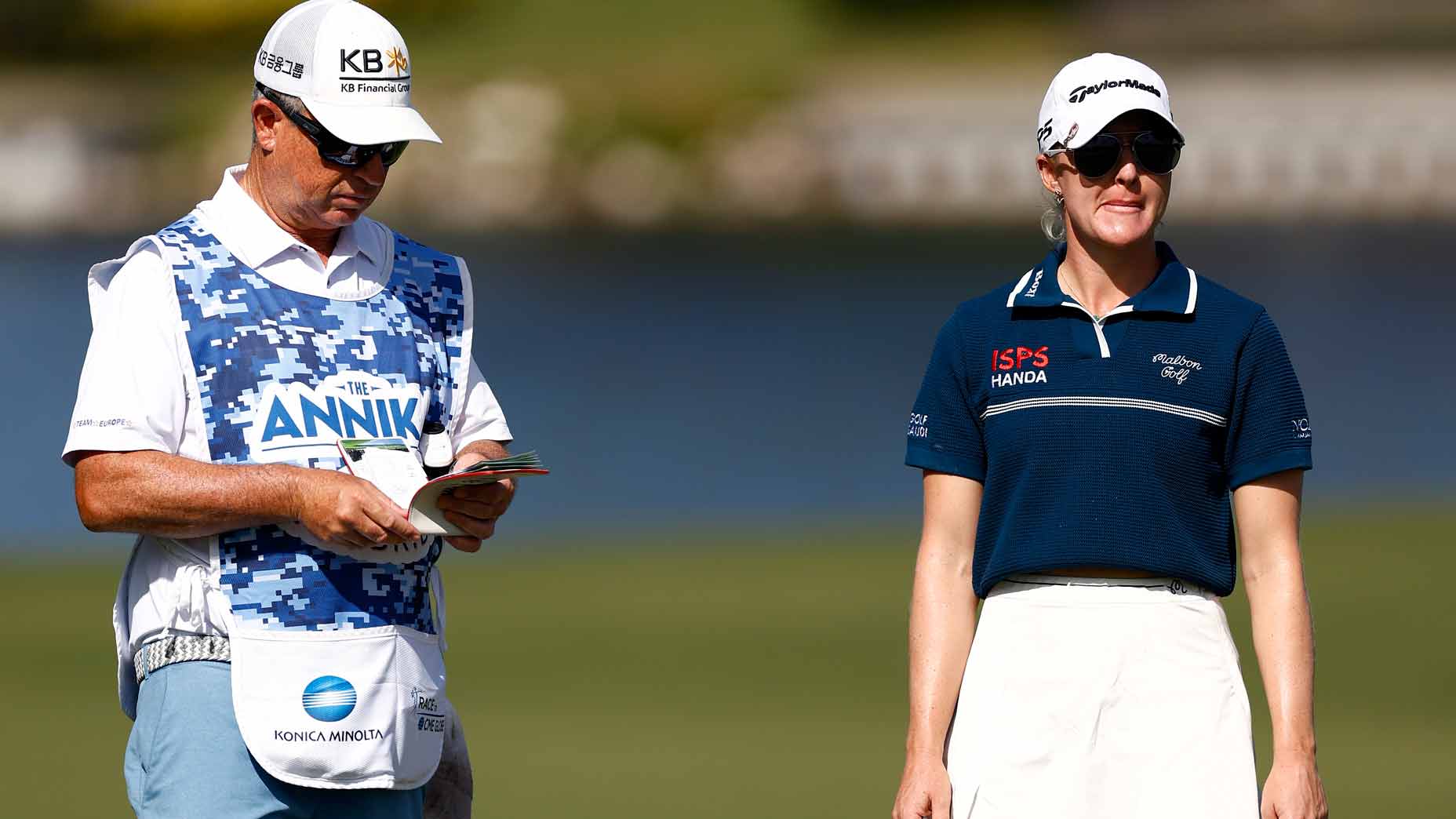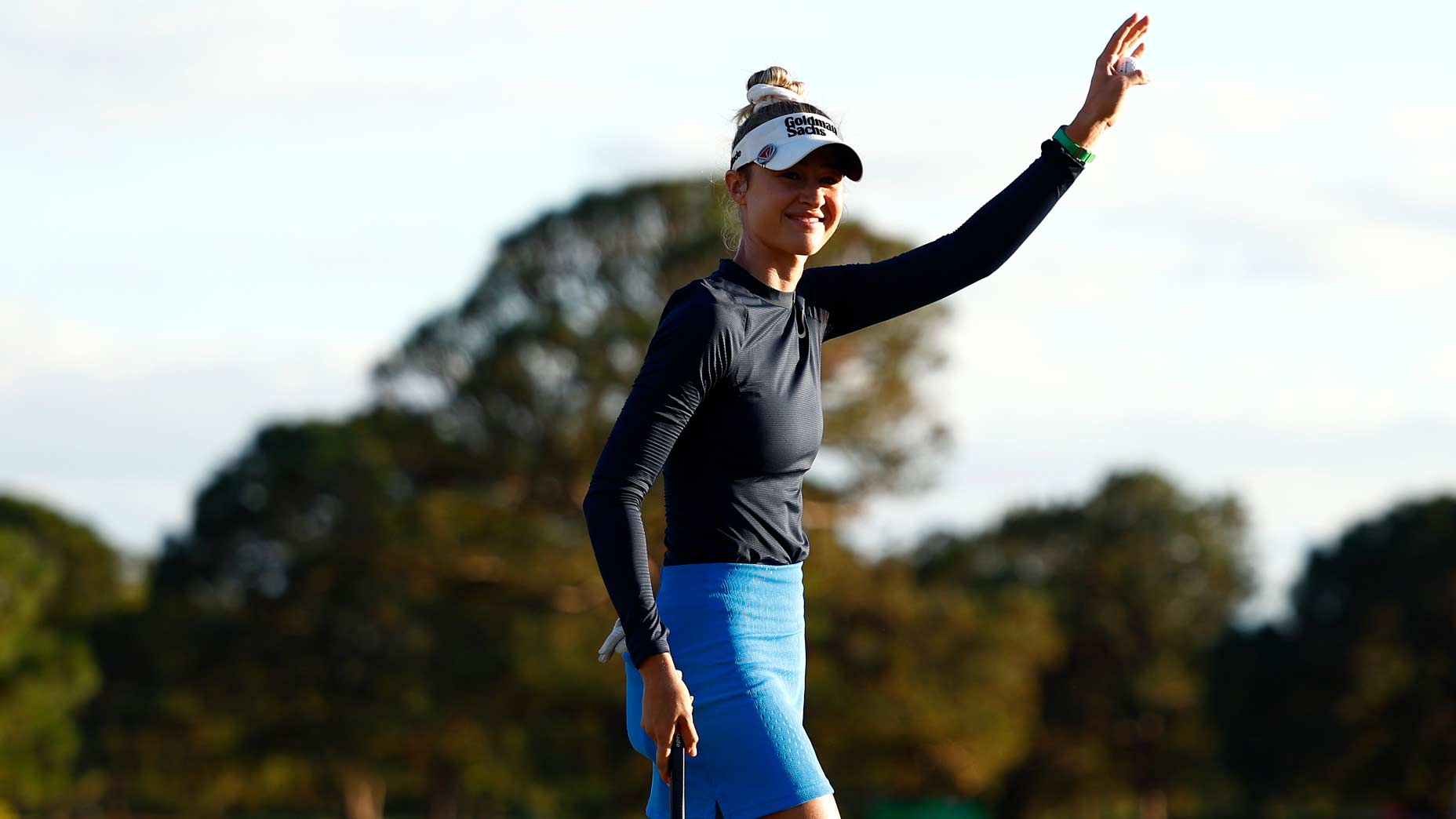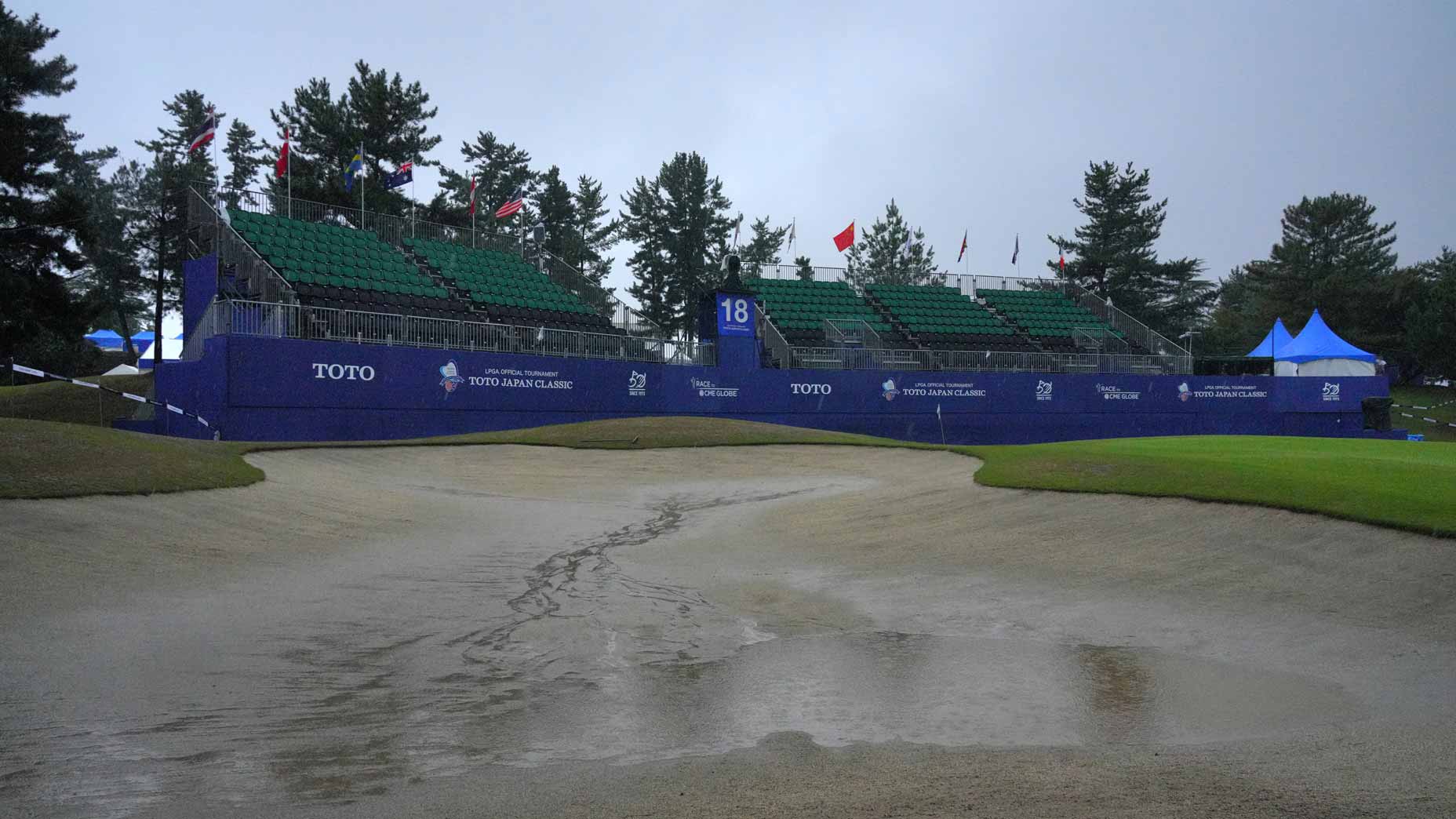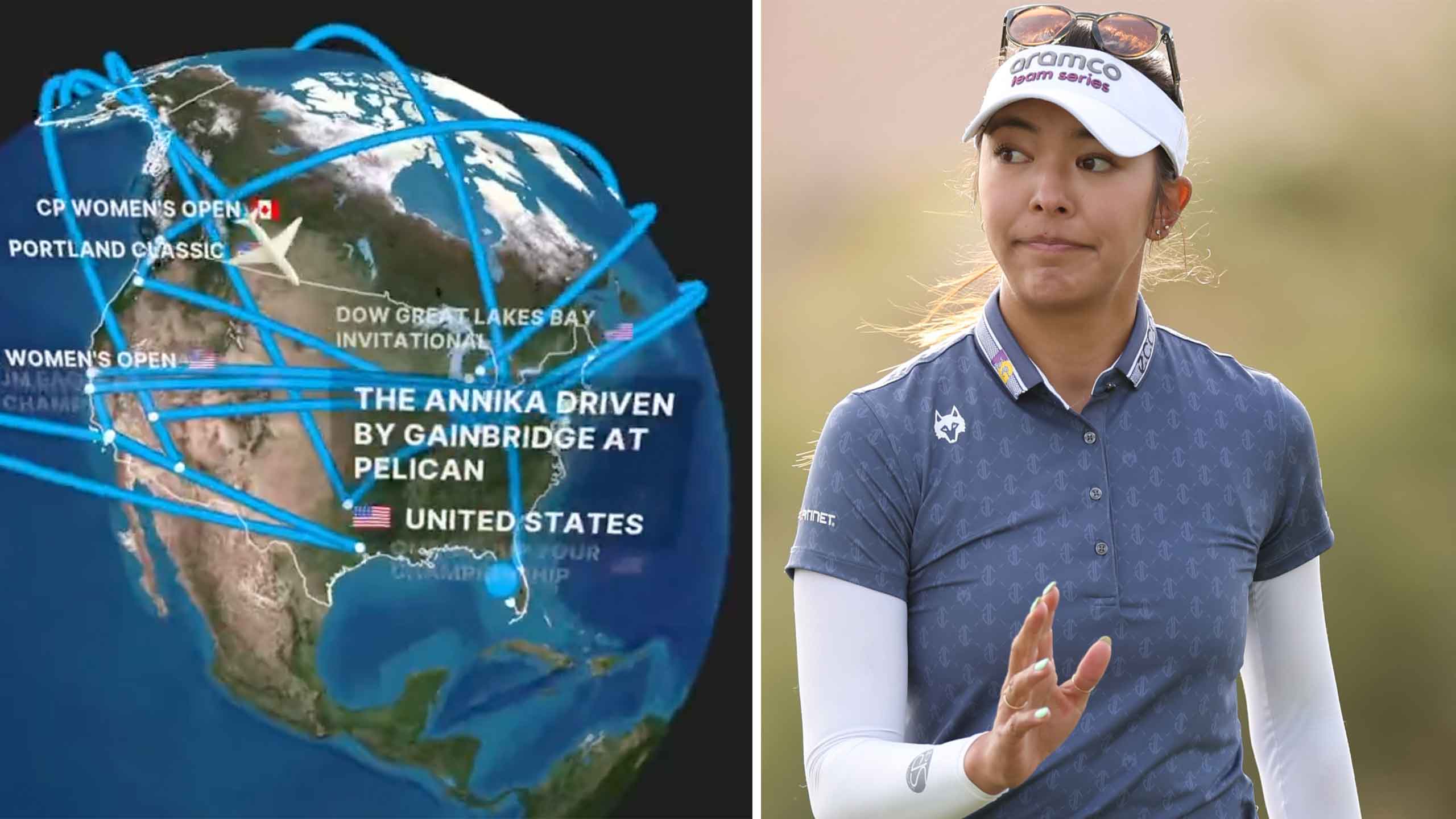How playing majors at prestigious courses benefits women’s golf
- Share on Facebook
- Share on Twitter
- Share by Email

Aronimink Golf Club is one of many classic courses that will host women's majors in future years.
Getty Images
NEWTOWN SQUARE, Pa. — Golf has had an obvious gender gap since its inception. Even now, it is still referred to as a “gentleman’s game,” which is a bit exclusionary when considering the diverse demographic that makes up the sport. But that gap is closing, however slowly.
As recently as 2012, Augusta National — one of the most prestigious clubs in golf — did not have any female members. Last year they hosted the first ever Augusta National Women’s Amateur — the first women’s event on the historic grounds. The event signified another passed fence post in the march toward equality between the men’s and women’s game.
“I think today is a little wave of something big that’s going to come,” said women’s golf trailblazer Annika Sorenstam at the ANWA last April. “I’m not just talking girls golf. I’m talking golf, I’m talking women’s sports and I really think the ripple effect will go further. It’s been a tremendous start, and it’s the acceptance, and that to me means a lot and I think for all the girls.”
Although the wheels of progress were in motion long before, women being able to compete at Augusta National felt like a watershed moment. Just a decade and a half after the Masters was aired commercial free because the Martha Burk protest controversy, the green jackets had sanctioned a full-blown, national TV event for women.
That advancement of women’s golf can be seen in the pro ranks as well. Take this week’s KPMG Women’s PGA Championship, for example. In recent years the event has elevated its prestige by taking the event to noteworthy courses — Hazeltine and Olympia Fields, for example — and this year at the Philadelphia gem Aronimink Golf Club.
“It’s really great for women’s golf,” said Jennifer Kupcho after her second-round 65. She has a little experience playing well at historic venues — she won the inaugural ANWA last spring. “I think it’s great that people are watching just because they want to see the golf courses that we get to play and how we play them.”
The club had previously hosted a number of professional and amateur events for the men, but this week is the first time the best women in the world get to showcase their talents on the Donald Ross design. Since KPMG took over title sponsorship of the event in 2015, the PGA of America has made a concerted effort to take the major to prestigious venues.
In addition to Hazeltine and Olympia Fields, Sahalee Country Club and Kemper Lakes have hosted the Women’s PGA in the last five years — and the future sites are equally exciting. Atlanta Athletic Club gets the nod next summer while Congressional and Baltusrol follow.
KPMG Women’s PGA has different look and feel, but field’s mission remains the sameBy: Zephyr Melton
“What KPMG and the PGA of America have done with this event over the last few years is absolutely incredible,” Mariah Stackhouse said. “That kind of dedication to elevating women’s sports and seeking equal opportunity and play opportunities for us as the men, I couldn’t be more grateful, and on and off the course this event has just been first-class.”
And as the PGA of America has begun filling their roster with world-class courses, the USGA and R&A have followed suit. The U.S. Women’s Open has dates at Champions Golf Club, Olympic Club and Pebble Beach in the coming years, while the Women’s Open has Carnoustie, Muirfield and St. Andrews in their rota.
“I do believe that that’s what really drove the USGA to kind of get us on good golf courses as well,” said Mel Reid, the newest winner on the LPGA Tour. “We’re forever grateful because women’s golf does kind of get a little bit left behind at times, so I can’t tell you the gratitude that the players and the staff have for both the sponsors being able to put this on.”
The notion that prestigious courses can make that much of a difference might seem trivial, but the truth is it does matter. And it matters greatly. Some viewers who otherwise would not tune in might flip it over to women’s golf just to get a sneak peek at the course. More eyeballs results in more money.
Speaking of money, the purse this week is the largest in tournament history, with $645,000 going to the winner. That’s more than double what it was at the end of the last decade. And the investment is being met with innovation, too.
Sophia Popov readies for first major start since unlikely Women’s Open triumphBy: Zephyr Melton
With a fall full of sports after countless postponements this summer, the Women’s PGA has an earlier TV window on Sunday than normal. To combat this, the PGA of America will send off the leaders during the broadcast window instead of last off the tee in order to get their entire rounds on TV, traditions be damned.
“We feel it’s important that everyone watching the telecast will see the leaders, see the leaders play all 18 holes,” said Kerry Haigh, the Chief Championships Officer of the PGA of America. “Although it’s a little different and out of the box, we as partners with the LPGA and KPMG are prepared to make those changes for what we think will be a greater and a better championship for everyone to observe.”
But even with this series of investment in the women’s game, there is still a way to go. The winner of the Women’s PGA (a major) will earn roughly what a T2 finish at the Shriner’s Hospitals for Children Open (a PGA Tour fall season event) will make this week. Not to mention the inherent sexism that is still prevalent, such as when a Twitter troll suggested a men’s 4-handicap could win an LPGA Tour event (a ridiculous notion).
Beyond the trolls and systemic biases however, there is progress. And for women’s golf, that’s a very good thing.
Latest In News

Zephyr Melton
Golf.com Editor
Zephyr Melton is an assistant editor for GOLF.com where he spends his days blogging, producing and editing. Prior to joining the team at GOLF, he attended the University of Texas followed by stops with the Texas Golf Association, Team USA, the Green Bay Packers and the PGA Tour. He assists on all things instruction and covers amateur and women’s golf. He can be reached at zephyr_melton@golf.com.

